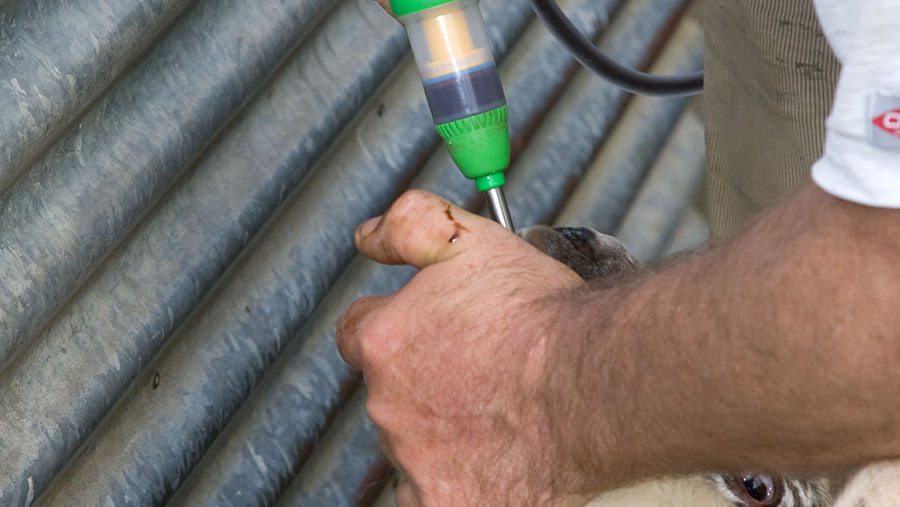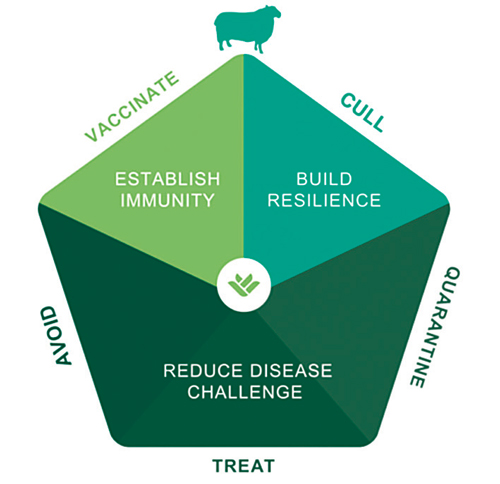Advice for quarantining incoming sheep to prevent lameness
 © Tim Scrivener
© Tim Scrivener Poor quarantine is one of the weakest links in the livestock sector, allowing disease to enter farms.
Sheep vet consultant Fiona Lovatt from Flock Health says farmers need to start taking quarantine seriously, with the responsibility for preventing the incursion of disease to the flock resting with the buyer.
Here, she talks through some of the key quarantine areas sheep farmers need to consider when it comes to managing lameness.
See more articles on sheep lameness:
- Sheep lameness: The successes and remaining challenges
- 4 ways to reduce sheep lameness to less than 2% by 2021
- How a sheep farmer has reduced lameness by 28%
- Advice on how to vaccinate sheep against foot-rot
- Step-by-step guide to foot-bathing sheep
- Should you trim sheep’s feet to control lameness?
- Advice for quarantining incoming sheep to prevent lameness
- How sheep farmer has reduced lameness to just 3%
1. Length of quarantine
Four weeks is the minimum time farmers should be quarantining any incoming sheep, in a dedicated area away from the rest of the flock.
The quarantine period is to make sure disease does not enter your farm. There is a big risk of bringing foot-rot and contagious ovine digital dermatitis (Codd) into the flock.
2. How to protect stock during the quarantine period
When new stock arrives, you should look at the feet of every sheep and ensure there are no infectious lesions.
You should foot-bathe them twice while in isolation. Make sure this is done properly and that sheep can stand on a hardstanding after foot-bathing, so the product can dry.
If anything shows signs of lameness during the four weeks, isolate them from the quarantine group and treat them with antibiotics before introducing them to the flock.
If you have a closed flock and have doubt about whether an animal has an infectious lesion, treat them with an antibiotic. This could prevent having to treat whole groups of animals.
Dr Lovatt recommends contacting the seller and sending stock back if there are a few lame animals – the ideal is not to accept any lame sheep.
Follow the Scops quarantine guide when it comes to worming.
In summary, sheep should receive two doses of a group 4 or group 5 wormer and an injectable macrocyclic lactone (group 3) wormer for sheep scab.
If fluke is a risk, they should be treated with a flukicide, but ideally not with triclabendazole because of increasing levels of resistance. Animals should be retreated after six weeks and stay away from fields known to have mud snails for this period.
3. Housing animals in quarantine
Incoming sheep should be housed on hardstanding for 48 hours after worming so they are not shedding eggs on to pasture.
After this, they can be housed in a dedicated paddock. This should be a generally well-used, dry field, with your own population of worms and that prevents any contact with other sheep, and has no streams or mud snails.
The Five-Point Plan

Sponsor’s message

This summer, MSD Animal Health, together with Farmers Weekly, have been highlighting how the FAI Five-Point Plan (5PP) gives sheep farmers a clear framework for managing lameness effectively by bringing together recommendations from key stakeholders in the sheep farming community to provide best-practice guidance and a range of practical tips.
Adoption of the 5PP will maintain progress towards the industry target of achieving less than 2% lameness (as per FAWC 2011) in the national flock by 2021. Widespread adoption of the 5PP will also help reduce the amount of antibiotics used by the sheep industry by at least 10%, in line with the RUMA Targets Task Force 2017 recommendations.
For a healthy view of a sound flock, follow the Five-Point Plan:
- Cull to build flock resilience
- Treat, quarantine and avoid to reduce the disease challenge
- Vaccinate to establish immunity.
Further detailed advice and support is available from vet practices and SQPs in animal health trade outlets.
Thanks to MSD Animal Health, whose sponsorship made it possible to run the Sheep Lameness Roundtable 2019. Farmers Weekly had complete editorial control of this report.
